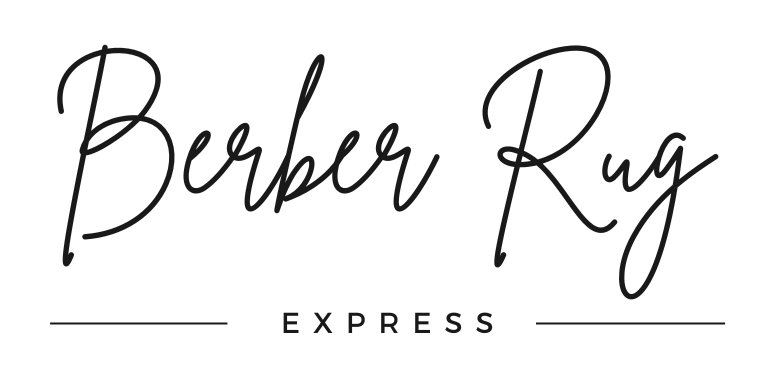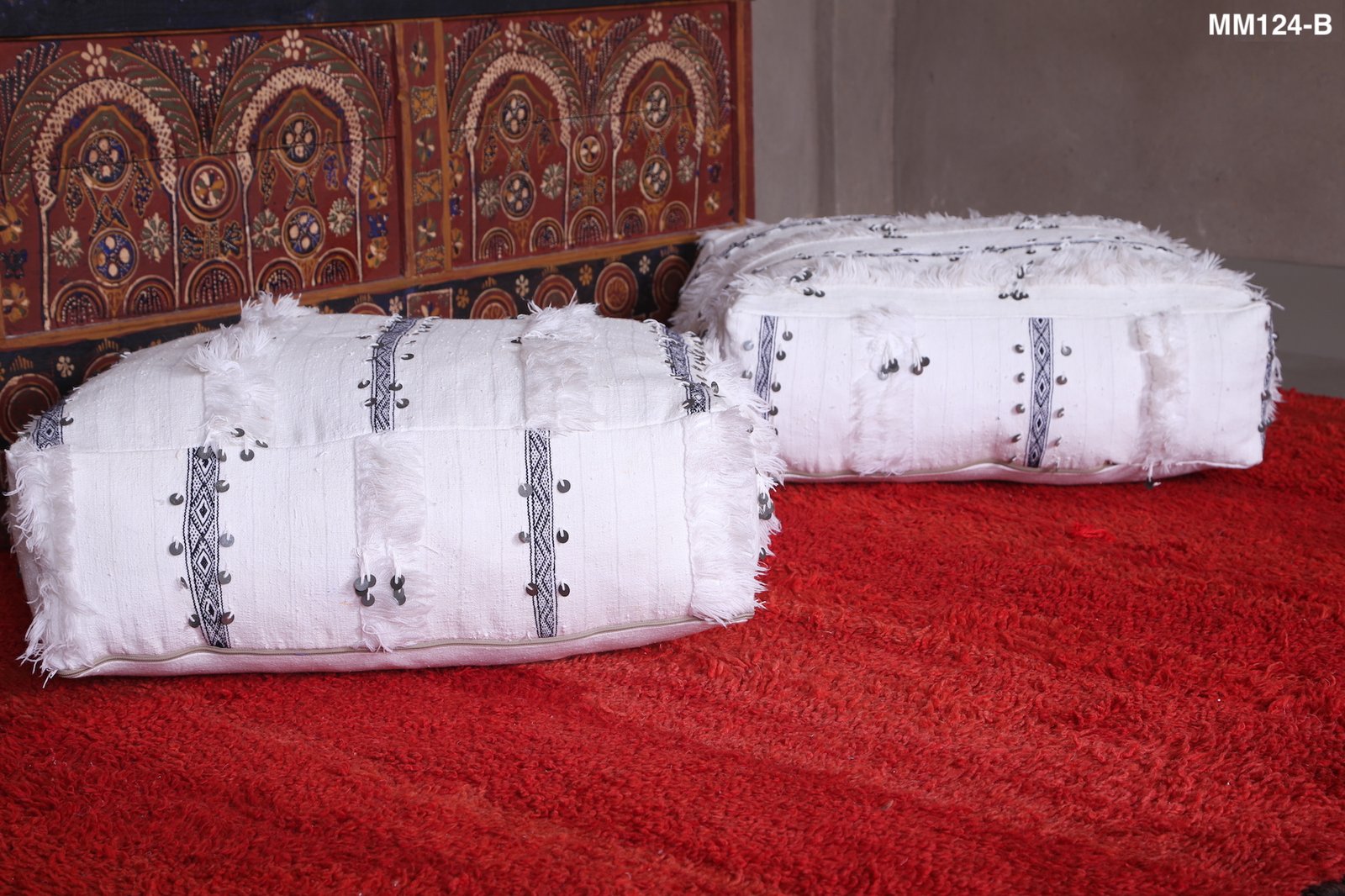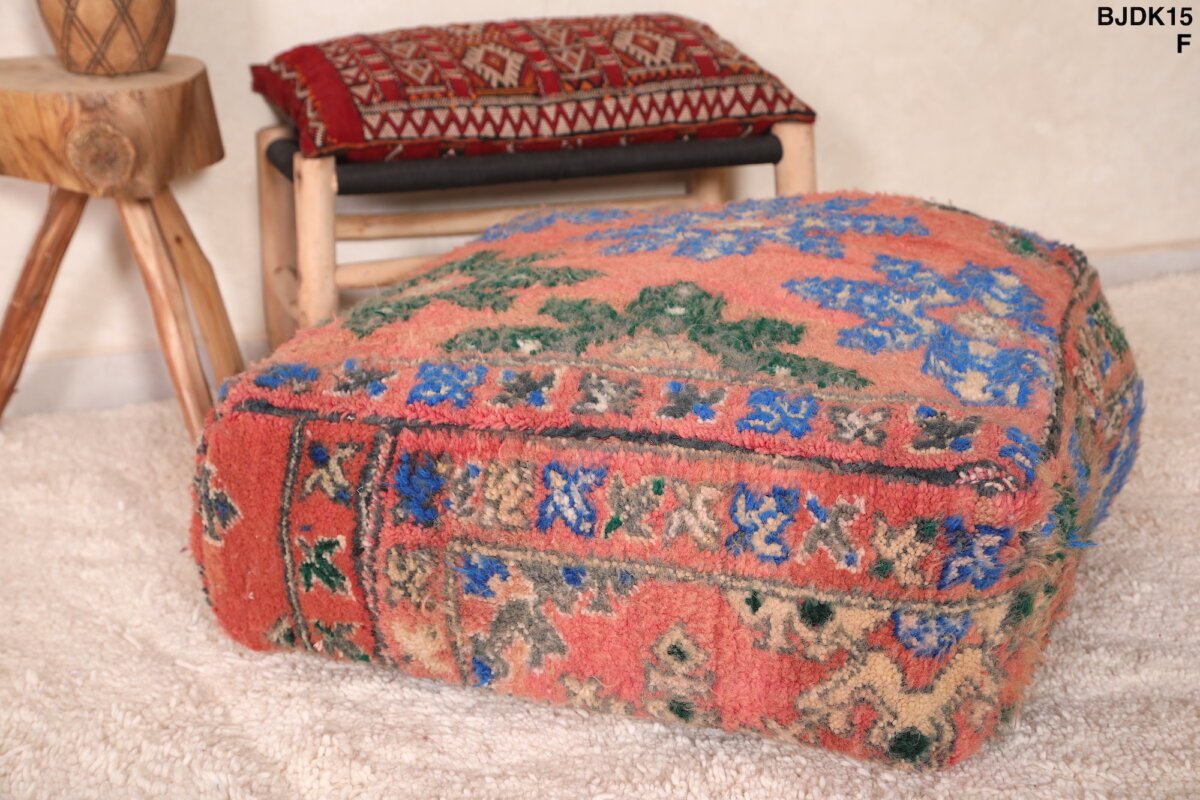Introduction to Moroccan Poufs
Moroccan poufs, often referred to as ottomans, are versatile and stylish pieces of furniture that originate from North African culture. These poufs are traditionally handcrafted from materials such as leather and fabric and are frequently adorned with intricate embroidery or colorful patterns. Their origins can be traced back centuries, being used in Moroccan households for seating or as footrests.
One of the remarkable aspects of Moroccan poufs is their cultural significance. Rooted deeply in Moroccan tradition, they reflect the rich craftsmanship and artistic heritage of the region. Each pouf tells a story, with designs often inspired by local customs, nature, and historical motifs. Their cultural importance extends beyond their practical use, embodying the artistic spirit and communal values of Moroccan society.
The Popularity of Moroccan Poufs in Modern Interiors
In recent years, Moroccan poufs have surged in popularity among interior designers and homeowners. Their rise can be attributed to their aesthetic appeal and functional versatility. Whether placed in living rooms, bedrooms, or even outdoor patios, these poufs offer an elegant accent that can complement a variety of decor styles, from bohemian to contemporary.
Moreover, the growing interest in sustainable and artisanal products has contributed to the demand for Moroccan poufs. Handcrafted by skilled artisans using traditional methods, they provide a connection to authentic craftsmanship that mass-produced items often lack. This aspect not only enhances the visual warmth of a space but also supports ethical consumer practices.
In the realm of interior design, the adaptability of Moroccan poufs is highly valued. Designers appreciate their ability to add texture, color, and an exotic flair to any interior setting. The poufs’ multifunctionality—serving as seating, footrests, or decorative accents—further cements their place as a staple in modern, stylish homes.
Unique Characteristics and Craftsmanship
Moroccan poufs are unparalleled in their distinctive attributes, setting them apart as exceptional accent pieces within cozy and chic interiors. These poufs are renowned for their utilization of high-quality natural materials such as genuine leather, organic cotton, and vivid dyes derived from plant sources. This careful selection ensures that each pouf not only embodies aesthetic elegance but also delivers durability and sustainable function.
The craftsmanship of Moroccan poufs is deeply rooted in tradition, with techniques that have been refined and handed down through generations. Each pouf represents a culmination of artisanal skills, where meticulous attention to detail is paramount. Artisans often employ age-old hand-stitching methods, intricate embroidery, and delicate metalwork to create truly unique pieces. This level of detail is rarely found in mass-produced items, elevating the allure and value of Moroccan poufs.
Intricate designs play a monumental role in the uniqueness of Moroccan poufs. Patterns are often inspired by the rich cultural tapestry of Morocco, incorporating motifs such as geometric shapes, natural elements, and symbolic icons. These designs are not merely decorative but carry cultural significance, representing tales and traditions that have shaped Moroccan heritage over centuries. As a result, each Moroccan pouf tells its own story, making it a one-of-a-kind statement piece within any interior space.
The artisanal techniques that contribute to the distinct charm of Moroccan poufs include traditional tanning processes, hand-painting, and the usage of looms for weaving intricate patterns. These methods require immense skill and patience, resulting in a labor-intensive creation process that adds to the exclusivity of each pouf. By supporting artisans who employ these time-honored techniques, buyers are not only obtaining a beautiful item but also contributing to the preservation of a rich cultural legacy.
In summation, Moroccan poufs are more than just decorative items; they are the embodiments of history, culture, and artisanal expertise. This combination of high-quality materials, time-honored craftsmanship, and intricate designs ensures that these poufs remain coveted accents in any stylish and warm living space.
Versatile Uses in Home Decor
Moroccan poufs have gained significant popularity for their versatility and ability to blend seamlessly into various home decor styles. As multifunctional pieces, these poufs offer an array of uses, enhancing both form and function in any room. Primarily, Moroccan poufs serve as extra seating. Their compact size and plush comfort make them perfect for living rooms, family rooms, or even home offices. They can effortlessly turn a small space into a welcoming and cozy nook for guests.
Additionally, these poufs double up as footstools, providing the perfect spot to rest your feet after a long day. Place one in front of a sofa or armchair in the living room to create a relaxed and inviting atmosphere. The durability and craftsmanship of Moroccan poufs ensure they withstand daily use while retaining their aesthetic appeal.
Another innovative use for Moroccan poufs is as a coffee table or side table alternative. When topped with a sturdy tray, these poufs can hold drinks, books, or decorative items, combining practicality with style. Their unique designs and vibrant colors add a touch of exotic charm, making them ideal focal points in any room. In bedrooms, they can be placed at the foot of the bed for added texture and visual interest or used as bedside tables to hold nighttime essentials.
In children’s rooms, Moroccan poufs are a playful yet functional addition, offering a soft and safe seating option for reading or playing. Their lightweight nature means they can be easily moved and repositioned as needed. Moroccan poufs also shine as decorative accents in various settings. Whether placed in an entryway, sunroom, or outdoor patio, their intricate patterns and rich hues infuse spaces with warmth and character.
From modern minimalist to bohemian chic interiors, the versatility of Moroccan poufs ensures they can enhance any decor. Their ability to adapt to different functions and spaces makes them a valuable asset in creating cozy and chic home interiors.
Styling Tips for Different Interiors
Moroccan poufs make a versatile and aesthetically pleasing addition to a variety of interior design themes. They are particularly effective in creating stylish and cozy spaces. Whether your home embodies a bohemian, minimalist, eclectic, or contemporary style, integrating a Moroccan pouf can enhance the overall design and offer a functional piece of furniture.
For bohemian interiors, Moroccan poufs work best when paired with vibrant textiles, eclectic art pieces, and plenty of greenery. Opt for poufs in rich, earthy tones or patterns that complement your existing color palette. Mix and match textures by placing the pouf near wicker furniture or a shaggy area rug. This blending of elements will heighten the room’s relaxed and eclectic vibe.
In a minimalist setting, choose Moroccan poufs in neutral or monochromatic shades such as whites, grays, or muted browns. Their simple, clean design will harmonize with streamlined furniture and sparse decoration. A single, well-placed pouf can serve as a statement piece without overwhelming the minimalist aesthetic. Placing it next to a sleek sofa or beneath a floating shelf can help maintain an uncluttered yet inviting space.
For eclectic interiors, the key is to embrace contrast and uniqueness. Moroccan poufs in bold colors or intricate designs can tie various elements together. Position the pouf amid a mixture of vintage and contemporary furniture to achieve a balanced yet diverse look. Coordinating the pouf’s patterns with throw pillows or wall art will integrate it seamlessly into the eclectic theme.
In contemporary settings, Moroccan poufs can introduce an element of warmth and texture. Select poufs with modern geometric patterns or leather finishes that echo the room’s contemporary elements. To maintain a cohesive look, align the pouf with the room’s color scheme; metallic accents or muted colors work particularly well. Placing the pouf in a social area such as a living room corner will add both style and functionality, serving as an extra seat or footrest.
By carefully considering color coordination, pairing your Moroccan pouf with complementary furniture, and focusing on the harmony of the overall space, you can seamlessly incorporate this versatile piece into any interior design theme.
Benefits of Adding Moroccan Poufs to Your Space
Incorporating Moroccan poufs into your home decor brings numerous benefits that enhance both functionality and aesthetics. Among the foremost advantages is the added comfort these pieces provide. Traditionally crafted with soft, durable materials, Moroccan poufs offer a plush seating option that complements a cozy and inviting atmosphere. Whether used as footrests, extra seating, or even low tables, they significantly contribute to the comfort of your living areas.
Beyond their functional appeal, Moroccan poufs are celebrated for their aesthetic charm. These poufs come in a variety of vibrant colors and intricate patterns, often inspired by traditional Moroccan artistry. Such design elements can serve as focal points within a room or seamlessly blend with existing decor, enhancing the visual appeal of your interiors. By adding a Moroccan pouf, you can introduce a touch of exotic elegance that elevates the overall decor theme.
Versatility is another key benefit of Moroccan poufs. Their multifunctional nature makes them suitable for various rooms and purposes. In living rooms, they can act as casual seating or a chic decorative element. In bedrooms, poufs can replace traditional ottomans at the foot of the bed. Their adaptability also extends to outdoor spaces; Moroccan poufs can contribute to an effortlessly stylish patio or garden setup. This versatility makes them a practical addition that meets diverse needs and preferences.
Lastly, Moroccan poufs bring a unique cultural touch to any space. They encapsulate the rich heritage and artisan craftsmanship of Morocco, infusing your home with a sense of history and worldly sophistication. By incorporating these pieces, you are not only enhancing your decor but also celebrating the artistry and traditions from a different part of the world. This cultural enrichment can provoke conversations and provide a deeper sense of connection to global aesthetics.
How to Choose the Right Moroccan Pouf
Selecting the ideal Moroccan pouf for your home involves a blend of aesthetic choices and practical considerations. Start by evaluating the size of the pouf. Moroccan poufs come in various dimensions, from small footstools to larger seating options. Measure the space where you intend to place the pouf to ensure it will fit harmoniously without making the room feel cluttered.
Material selection is another critical factor. Moroccan poufs are typically crafted from leather or fabric. Leather poufs offer a luxurious and durable option, often made from high-quality, hand-stitched goat leather. On the other hand, fabric poufs, woven from colorful textiles, provide a more relaxed and cozy feel. Consider the maintenance requirements of each material; leather is generally easier to clean, while fabric may be more susceptible to stains.
Color and design play significant roles in how well a Moroccan pouf will blend with your existing decor. Moroccan poufs are available in a wide array of colors, from vibrant hues to neutral tones. If you wish your pouf to stand out as an accent piece, opt for bold colors or intricate patterns. Conversely, neutral tones and simple designs may be more suitable if you prefer the pouf to blend seamlessly with the rest of your decor.
Matching the pouf with your current decor involves more than just color. Consider the overall interior style of your space. For a bohemian or eclectic vibe, poufs with intricate embroidery and bold patterns are excellent choices. Modern and minimalist homes may benefit from understated, monochromatic designs.
Finally, think about the multifunctionality of the pouf. Beyond aesthetics, Moroccan poufs can serve as extra seating, footrests, or even as makeshift tables. Balancing style and function will ensure your pouf not only enhances your interior decor but also meets your practical needs.
Caring for Your Moroccan Pouf
Proper maintenance of Moroccan poufs is essential to ensure their longevity and maintain their aesthetic appeal. Regular care not only preserves their functionality but also enhances the intricate craftsmanship that defines these unique pieces. Begin by understanding the material of your pouf, which can range from leather to fabric. Each type demands a distinct cleaning method.
For leather Moroccan poufs, it’s critical to clean them using a soft, damp cloth. Avoid harsh chemicals that can damage the leather. Mild soap can be employed for stubborn stains, but make sure to remove any soap residue with a clean, damp cloth. To maintain the leather’s softness and prevent cracking, apply a leather conditioner periodically. Leather poufs should be kept away from direct sunlight, as prolonged exposure can cause discoloration and dry out the material.
Fabric Moroccan poufs, on the other hand, can often be cleaned with a vacuum to remove surface dust and debris. Spot cleaning is effective for minor spills or stains; a mixture of water and mild soap typically works well. For deeper cleaning, refer to the manufacturer’s care instructions, as some fabric poufs may be machine washable, while others might require professional cleaning services. Regularly fluffing fabric poufs can also help them retain their shape over time.
Avoid placing Moroccan poufs in areas with high humidity or dampness to prevent mold and mildew. To preserve their structure, don’t overload the pouf with excessive weight; they are designed for light use such as seating or decoration. Rotating the pouf occasionally can promote even wear, especially in high-traffic areas.
By following these care instructions, your Moroccan pouf will not only retain its beauty but also serve as a cherished piece in your home for many years. Consistent maintenance ensures that the pouf remains a cozy and sophisticated accent in your chic interiors.
Where to Buy Authentic Moroccan Poufs
Authentic Moroccan poufs can significantly enhance the charm of your interior spaces, but finding genuine pieces can sometimes be a challenge. To ensure that you are purchasing real, handcrafted Moroccan poufs, it is crucial to source them from reputable vendors who uphold the authenticity and quality of these exquisite items.
Online retailers are a convenient option for purchasing Moroccan poufs. Websites like Etsy and Amazon feature numerous listings, but it is essential to conduct thorough research and read customer reviews to verify the authenticity of the products. Look for sellers with high ratings and positive feedback who provide detailed descriptions and high-quality images of their poufs. Additionally, consider buying directly from artisans through platforms such as Marrakesh Gallery, which specializes in authentic Moroccan décor.
Local brick-and-mortar stores are another reliable source for authentic Moroccan poufs. Specialty furniture stores, boutiques, and import shops often carry these items, especially in areas with a substantial Moroccan or North African community. Visiting local bazaars or cultural fairs can also provide opportunities to purchase poufs directly from artisans, ensuring the authenticity of the products.
Marketplaces in Morocco, known as souks, are the most traditional and reliable places to purchase genuine Moroccan poufs. Cities like Marrakech and Fes are renowned for their bustling markets filled with skilled artisans crafting and selling these beautiful pieces. If traveling to Morocco isn’t an option, there are various online marketplaces that connect buyers with Moroccan artisans, allowing for the purchase of authentic poufs from the comfort of your home.
To avoid counterfeits, consider the material and craftsmanship of the poufs. Authentic Moroccan poufs are typically made from high-quality leather or dense fabric and feature hand-stitched embroidery or intricate patterns. Counterfeit items may be made from synthetic materials and exhibit machine-made designs. It’s also helpful to inquire about the origin of the pouf and request documentation or a certificate of authenticity if possible.
By knowing where to buy authentic Moroccan poufs and how to verify their authenticity, you can confidently add these elegant pieces to your home, creating a cozy and chic interior that reflects the beauty of Moroccan craftsmanship.



